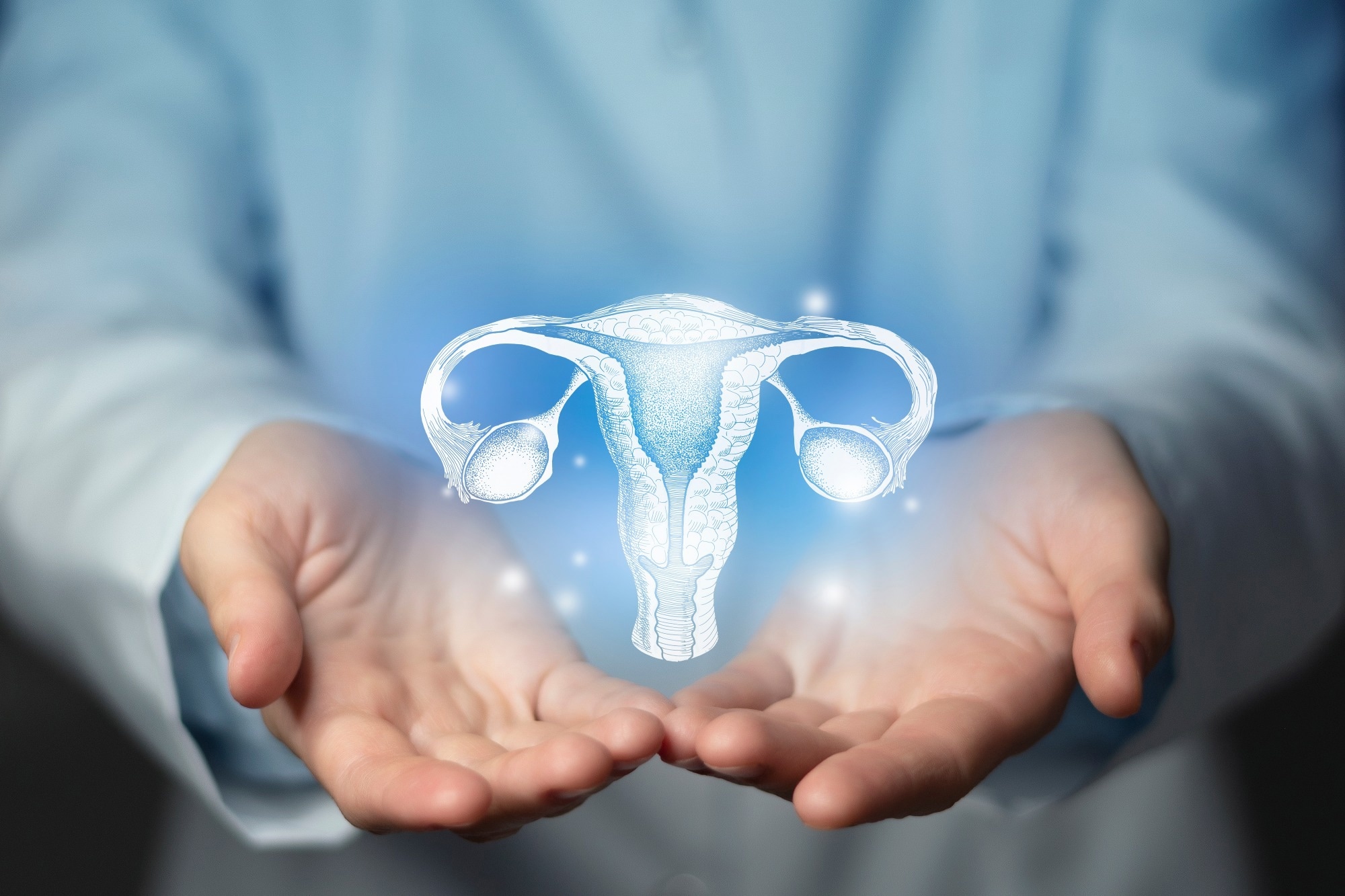Unlike previous hypotheses, the study findings indicate that B-cells are not primary mediators of PCOS pathogenesis; instead, these cells amplify the phenotypic expression of the condition. The current study also reveals the role of androgen receptors in altering B-cell numbers in PCOS patients.
 Study: The role of B cells in immune cell activation in polycystic ovary syndrome. Image Credit: mi_viri / Shutterstock.com
Study: The role of B cells in immune cell activation in polycystic ovary syndrome. Image Credit: mi_viri / Shutterstock.com
What is PCOS?
PCOS is a hormonal condition characterized by a significantly increased production of androgens by the ovaries. The term 'PCOS' originates from the numerous cysts, which are fluid-filled sacs that develop on the surface of the ovaries.
PCOS is the most common hormonal disorder globally, affecting between 5-18% of women of reproductive age. Symptoms of PCOS include rapid weight gain, menstrual irregularity, excess hair growth, and acne. Importantly, PCOS is the most common cause of female infertility.
The underlying causes of PCOS remain unknown; however, researchers believe the interplay between genetic and environmental factors contributes to the onset of the disease. Previous work has hypothesized that B-cells play a central role in PCOS, though the mechanism of this association remains unknown.
Research on mu heavy chain knockout mice (MuMt-; Bnull), which are mice that are genetically incapable of producing mature B-cells, has suggested that B-cells amplify the metabolic effects of diseases, especially diabetes and insulin resistance. Since type 2 diabetes (T2D) and hyperthyroidism, both of which are autoimmune conditions, are strongly correlated with PCOS, scientists have attempted to investigate an autoimmune trigger for PCOS, which has remained unsuccessful.
Study findings
In the present study, researchers evaluate previously hypothesized factors associated with cyst formation and inflammation, which include B-cell frequency, hyperandrogenemia, and autoantibodies.
Researchers began by characterizing B-cell lineages using 15 PCOS-positive and 22 PCOS-negative women as test and control groups, respectively. The test group fulfilled all three Rotterdam Criteria, which include polycystic ovarian morphology, amenorrhea, and hirsutism, in addition to exhibiting significantly higher androstenedione and testosterone levels.
Although naïve B-cell levels were identical between both groups, mature B-cells in PCOS women lacked the expression of CD27 and immunoglobulin D (IgD) cell surface markers (CD27- IgD-). Serum antibody analyses similarly revealed that circulating IgM were upregulated in the PCOS group, in addition to higher Free Androgen Index and testosterone values. These results were significant, even after adjusting for body mass index (BMI).
Interestingly, no differences were noted for circulating IgG while IgA titers were lower in women with PCOS."
Human IgG antibodies were transferred from four PCOS and control women into wild-type mice to determine whether POCS has autoimmunological associations. No differences were observed in the ovulatory cycles of these mice; however, those receiving PCOS-positive IgG exhibited increased body mass three weeks following treatment.
To evaluate the role of androgens in B-cell composition and frequency, dihydrotestosterone (DHT)-induced PCOS murine models were used. The three study groups included those subcutaneously administered DHT, controls, and mice receiving both DHT and an androgen receptor (AR) suppressor.
After four weeks of treatment, DHT-only mice gained weight and experienced disrupted estrous cycles, which was not reported in the other two groups. B-cell composition and frequency were significantly altered in the DHT-treatment group as compared to the other groups. These mice also exhibited PCOS-like symptoms, with ovarian tissues significantly affected.
The researchers then transferred B-cells from PCOS-like mice into B-cell-deficient mice. Herein, the test group did not exhibit any PCOS-like symptoms.
To explicitly determine whether the lack of B-cells can impart immunity from PCOS onset, the researchers subcutaneously administered DHT to knockout mice lacking B-cells. These mice subsequently developed PCOS-like symptoms four weeks after treatment.
Conclusions
Hyperandrogenic women experience morphological and frequency variations in their B-cells, as well as an upregulation of circulating IgM in their blood and tissues. This is indicative of the role of androgens in PCOS onset; however, it does not discount the mechanistic influence of either B-cells or IgM.
When DHT is adminstered to mice, PCOS-like symptoms in their metabolic, immunological, and reproductive tissues arise. These include PCOS-identical changes in their B-cells, which reflects the role of androgens in causing B-cell alterations observed in PCOS.
PCOS-like B-cells introduced into B-cell-deficient mice do not induce PCOS symptoms. Thus, while B-cells may amplify the effects of pre-existing PCOS, they cannot initiate the disease.
In contrast, when androgens alone are introduced into B-cell-deficient mice, PCOS onset is observed. This observation indicates that androgens are a causative factor of PCOS and that the lack of B-cells does not infer immunity from PCOS.
Taken together, the study findings elucidate the underlying mechanisms and causative agents responsible for PCOS. Hyperandrogenism, caused by genetic and environmental interactions, independently initiated PCOS-like symptoms, including B-cell alterations, menstrual disruptions, and significant weight gain.
As compared to previous hypotheses, B-cells, while incapable of triggering PCOS, were involved in exuberating the condition. B-cells in PCOS-positive women exhibit significant alternations in their cell surface markers and may be used as early indicators of the disease.
Most importantly, we show that B-cells are not the central mediators of systemic inflammation or glucose metabolism impairment in PCOS, as a lack of these lymphocytes does not protect from the induction of a PCOS-like phenotype following DHT exposure."
Journal reference:
- Ascani, A., Torstensson, S., Sanjiv Risal, S., et al. (2023) The role of B cells in immune cell activation in polycystic ovary syndrome. eLife. doi:10.7554/eLife.86454